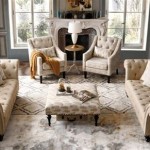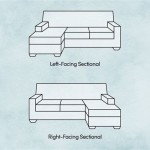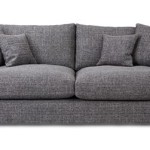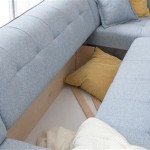Grey Walls With Tan Sofa: A Design Synthesis
The combination of grey walls and a tan sofa represents a versatile and sophisticated design scheme suitable for a wide array of interior spaces. The interplay between these neutral tones creates a calming and inviting atmosphere, while also providing a flexible backdrop for incorporating bolder accents and personalized decor elements. This article will explore the nuances of this design pairing, examining its strengths, offering practical advice for implementation, and discussing the various stylistic interpretations possible.
Grey, in its numerous shades, offers a contemporary alternative to traditional white or beige walls. It possesses a subtle coolness that can visually expand a room, creating a sense of spaciousness and airiness. Tan, on the other hand, introduces warmth and earthiness, preventing the space from feeling sterile or impersonal. The contrast between these two tones provides visual interest and balance, forming a foundation upon which a cohesive and aesthetically pleasing interior can be built.
The selection of the specific grey and tan hues is critical to achieving the desired effect. Light grey walls paired with a light tan sofa can evoke a Scandinavian-inspired aesthetic, characterized by minimalism and a focus on natural light. Conversely, darker grey walls combined with a deeper tan sofa can create a more dramatic and intimate ambiance, suitable for a living room or den.
Understanding the Versatility of Grey and Tan
One of the primary advantages of using grey walls with a tan sofa is its adaptability to various design styles. The neutral palette serves as a blank canvas, allowing homeowners to experiment with different textures, patterns, and accent colors without overwhelming the space. Whether the desired outcome is a modern minimalist aesthetic, a cozy bohemian retreat, or a classic traditional setting, this color combination provides a solid foundation.
In a modern setting, the clean lines of a tan leather sofa can be accentuated by smooth, flat grey walls. Minimalist art, metallic accents, and geometric patterns can further enhance the contemporary feel. Conversely, in a bohemian-inspired space, a tan velvet sofa can be paired with textured grey walls, such as those with a limewash finish. Macramé wall hangings, woven rugs, and an abundance of plants can add to the eclectic and relaxed atmosphere.
For a more traditional approach, a tan sofa with classic lines and detailing can be placed against grey walls adorned with wainscoting or crown molding. Antique furniture, ornate mirrors, and patterned rugs can contribute to a sense of timeless elegance. The key is to maintain a balance between the formality of the traditional elements and the understated sophistication of the grey and tan color scheme.
Furthermore, the grey and tan combination is highly amenable to incorporating various accent colors. Jewel tones such as emerald green, sapphire blue, or ruby red can add pops of color and visual interest. Earthy tones like terracotta, olive green, or ochre can enhance the natural and organic feel. Metallics such as gold, silver, or brass can introduce a touch of glamour and sophistication.
The versatility also extends to the choice of materials. Grey walls can be achieved through paint, wallpaper, or even textured surfaces like concrete or stucco. A tan sofa can be upholstered in a variety of fabrics, including leather, linen, velvet, or cotton, each offering a unique tactile experience and visual appeal. The selection of these materials can further contribute to the overall design aesthetic.
Selecting the Right Shades of Grey and Tan
The success of a grey and tan color scheme hinges on the careful selection of the specific shades of each color. The undertones of both grey and tan must be considered to ensure a harmonious and balanced aesthetic. Grey can have cool undertones (blue, green, or purple) or warm undertones (brown, yellow, or red). Similarly, tan can range from cool tans with hints of grey or beige to warm tans with hints of yellow, orange, or brown.
When pairing grey and tan, it is generally advisable to choose shades that share similar undertones. For example, a cool grey with blue undertones will complement a cool tan with grey or beige undertones. Conversely, a warm grey with brown undertones will pair well with a warm tan with yellow or orange undertones. Mixing shades with contrasting undertones can create a discordant and unbalanced effect.
The amount of natural light in the room should also be taken into consideration when selecting the grey and tan shades. In a room with abundant natural light, darker shades of grey can be used without making the space feel too small or enclosed. In a room with limited natural light, lighter shades of grey and tan are preferable to maximize brightness and create a more airy atmosphere.
It is always recommended to test paint samples on the walls and observe how they look under different lighting conditions before committing to a particular shade of grey. Similarly, it is advisable to obtain fabric swatches of the tan sofa upholstery and compare them to the paint samples to ensure a harmonious pairing. This process allows for a more informed decision and helps to avoid costly mistakes.
The choice of grey can significantly alter the overall feeling of the room. A very light grey can act almost as a neutral white, providing a bright and airy backdrop. Mid-tone greys create a more grounded and sophisticated feel, while dark greys can add drama and depth. Consider the desired mood of the room when selecting the appropriate grey shade.
Likewise, the choice of tan will influence the warmth and character of the space. A light tan can feel fresh and inviting, while a deeper tan can feel more cozy and intimate. Consider the size and shape of the sofa when selecting the tan shade. A larger sofa may benefit from a lighter tan to prevent it from overwhelming the space, while a smaller sofa can handle a deeper tan without feeling too heavy.
Incorporating Textures and Patterns
While grey and tan provide a neutral foundation, the incorporation of textures and patterns is essential to adding visual interest and preventing the space from feeling flat or monotonous. Texture can be introduced through a variety of materials, including fabrics, rugs, wall coverings, and accessories. Patterns can be incorporated through upholstery, curtains, pillows, and artwork.
Consider layering different textures to create depth and dimension. A tan velvet sofa can be paired with a grey shag rug, a linen throw blanket, and textured throw pillows. This combination of textures will add a tactile element to the space and make it feel more inviting. On the walls, consider using textured paint or wallpaper to add visual interest.
Patterns can be used sparingly or liberally, depending on the desired aesthetic. For a minimalist look, subtle patterns such as stripes or geometric designs can be used on pillows or rugs. For a more eclectic look, bolder patterns such as floral prints or animal prints can be incorporated through upholstery or artwork. The key is to maintain a balance and avoid overwhelming the space with too many competing patterns.
When selecting patterns, consider the scale of the room and the size of the furniture. Smaller patterns are generally more suitable for smaller rooms and furniture, while larger patterns can be used in larger spaces. It is also important to consider the color palette of the patterns. Choose patterns that incorporate shades of grey and tan to create a cohesive and harmonious look. Accent colors can also be incorporated into the patterns to add pops of color and visual interest.
The addition of metallic accents, such as gold, silver, or brass, can also enhance the visual appeal of the space. Metallic finishes can be incorporated through lighting fixtures, furniture hardware, accessories, or artwork. These metallic accents can add a touch of glamour and sophistication to the grey and tan color scheme. Consider the undertones of the grey and tan when selecting metallic finishes. Warm greys and tans pair well with gold and brass accents, while cool greys and tans complement silver and chrome accents.
Ultimately, the key to successfully incorporating textures and patterns is to experiment and find what works best for the individual space and personal style. The grey and tan foundation provides a flexible canvas upon which to build a unique and aesthetically pleasing interior.

Grey Walls Tan Couch Living Room Colors Minimalist Remodel

Cozy Living Room With A Touch Of Tan And Vibrant Colors
Does Beige Furniture Go With Gray Walls Quora

Grey And Tan Living Room Inspiration Color Schemes Brown Blue

Living Room Tan And Gray With A Lil Black Home Designs Inspiration

The Trendiest Ways To Style A Brown Sofa

Decorating Around A Leather Sofa Centsational Style Brown Couch Living Room Grey

Long Tan Sofa Transitional Living Room Benjamin Moore Vapor Trails
Does Brown Furniture Go With Grey Walls Quora

What Wall Colors Go With Brown Furniture Ideas Images Gallery








